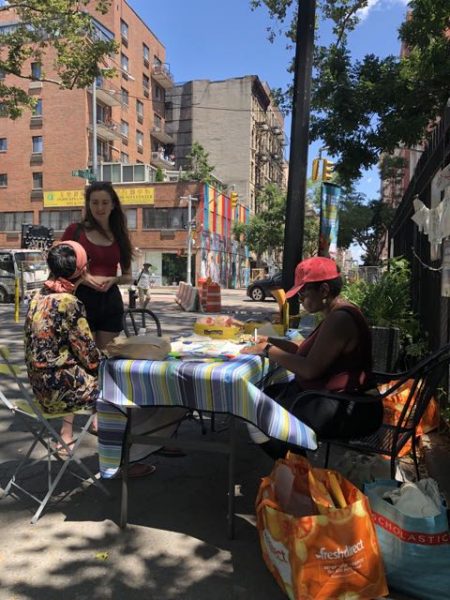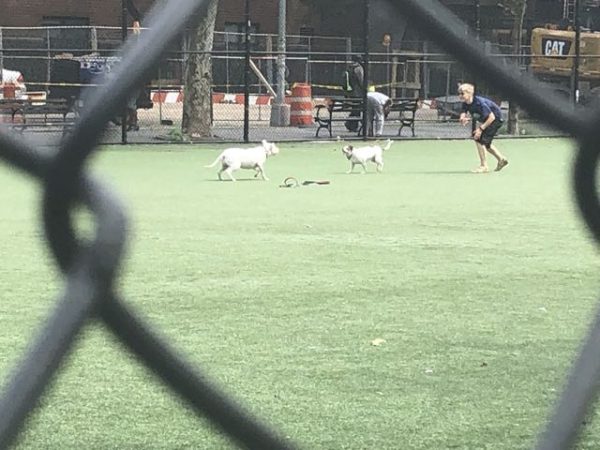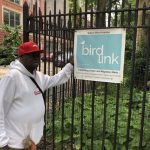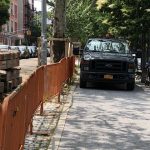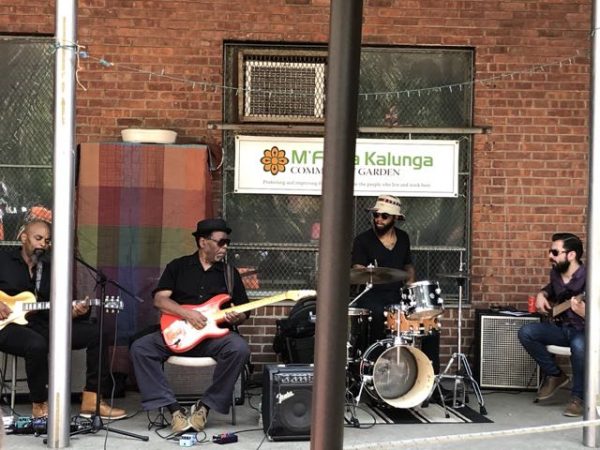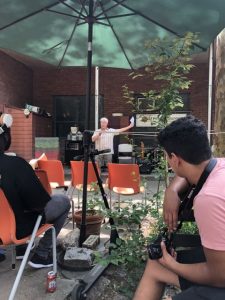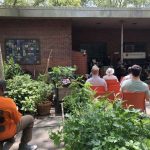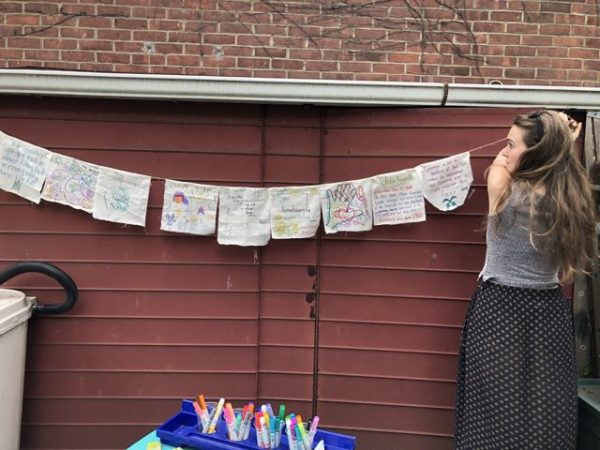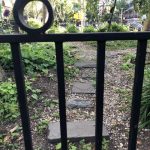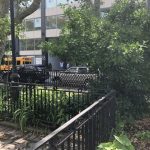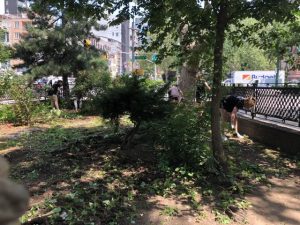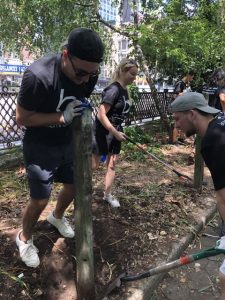Road Runner Club Help in SDR Park
Back a few months but we appreciate their efforts!
They ‘ran’ through the park collecting trash – much needed!
BirdLink – Being Built
We hope you have had a chance to visit with BirdLink near Houston Street in SDR Park (Chrystie Street side).
Here are a few photos of the work as it was being built:
MTA Meeting in the BRC on June 25, 2019
Productive Meeting with sharp questions and answers. They will set another meeting, we’ll keep you posted on when on the website.
Glad to have State Senator Brian Kavanagh attend.
Appreciations to CM Chin’s Chief of Staff Gigi Li who organized the meeting with MTA officials and Contractors.
Free for Children (Under18 Years Old) Breakfast, Lunch Near Rivington Playground
The DOE Food Truck makes this park area safer and more child friendly.
The staff are amazing: kind, welcoming, thoughtful – they are neighbors now.
No documentation, registration, or ID is required to receive these free summer meals. They’re a win-win for parents and children and a wonderful NYC resource.
Juneteenth in M’Finda Kalunga Community Garden
Music, libations, poetry, food, history, flowers, art, community…and
Dreams…
The Music: Robert Bryan, (with Irving Luis Lattin) and others
Debra Jeffreys-Glass organizer and leader and welcomer. Read: Maya Angelou
The Words: Lamar: “What is Juneteenth?”
The Community:
The Flowers:
The Art:
With special thanks to Councilmember Margaret Chin, Partnerships for Parks (Kirsti, Kyle, and Liam), The MKGardeners, Kim Fong ED BRC Senior Center, and the NYC Parks Department (Angelo, Denard, Misty and all).
Citizens for NYC, SDR Coalition, Partnerships for Parks, Parks Department & NYPD
Massive amounts of work done in Sara Roosevelt Park’s New Forsyth Conservancy and northern plots near the BRC today.
Thank you to Bloomingdales and the Bloomingdale’s volunteers, Citizens for NYC, Partnerships for Parks, Parks Department staff, and SDR Coalition.
Thank you to Ted, Steve, Bob, Lamar, Prince, K, Andrew, Alba, Kirsti, Kyle, Angelo, Denard, Rob, Barbara, DeMarina! Thanks to Officer Bozzo from the 5th Pct for checking in!
We hauled out 60 bags of garbage, removed old broken fencing, weeded out invasive plants, removed trash, mulched, swept, pruned, and sweated!
Before:
And a visit from the Tenement Museum’s Jason Eisner (whose team with Sarah Tomasewski recreated the New Forsyth Conservancy) and wonderful to meet Athena!
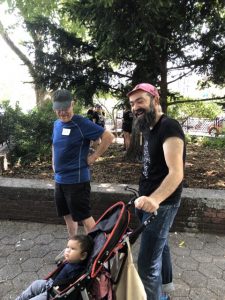
AND AFTER:
North Side in front of the BRC:
South Side of Delancey:
Needle Exchange sites
Our Park has this issue making it less safe for all park users: especially vulnerable are workers, children and homeless people.
From THE CITY:
“AS THE HEIGHTS STRUGGLES WITH OPIOID USE, NEEDLE EXCHANGE PROGRAM GOES HOMELESS”
By
“As the CORNER Project searches for a new home, area residents say they’ve seen an increase in drug use on local streets, while the nonprofit’s clients say they’re grateful for the help.
On a sidewalk on St. Nicholas Avenue, two men stood near a CORNER Project mobile center and ticked off the ways the group serves them.
Clean syringes are the main thing, said Kirk Marshall, 32, who has used heroin since prescribed painkillers first got him hooked on opioids in 2005.
The van’s fentanyl test kits are also key, he said, to make sure his heroin isn’t deadly.
“They’re welcoming. If you want to get clean, they’ll help you get into detox,” said Marshall, who started using painkillers after a weightlifting injury.
Next to him, a man who gave his name as “Frenchy” piped up: “Help with housing.”
“They get you set up with a doctor,” Marshall added.
Frenchy, who is homeless, says he’d “starve a lot of days” without the CORNER Project van.
“Oh, yeah, they provide food in the mornings, too,” Marshall said.”
*********************
We know what works to assist people – where they are at. It doesn’t mean condoning drug use it means helping people find a pathway forward, and a chance to have some respite and resources as they do – while also protecting the public.
- Go to the previous page
- 1
- …
- 56
- 57
- 58
- 59
- 60
- 61
- 62
- …
- 164
- Go to the next page




